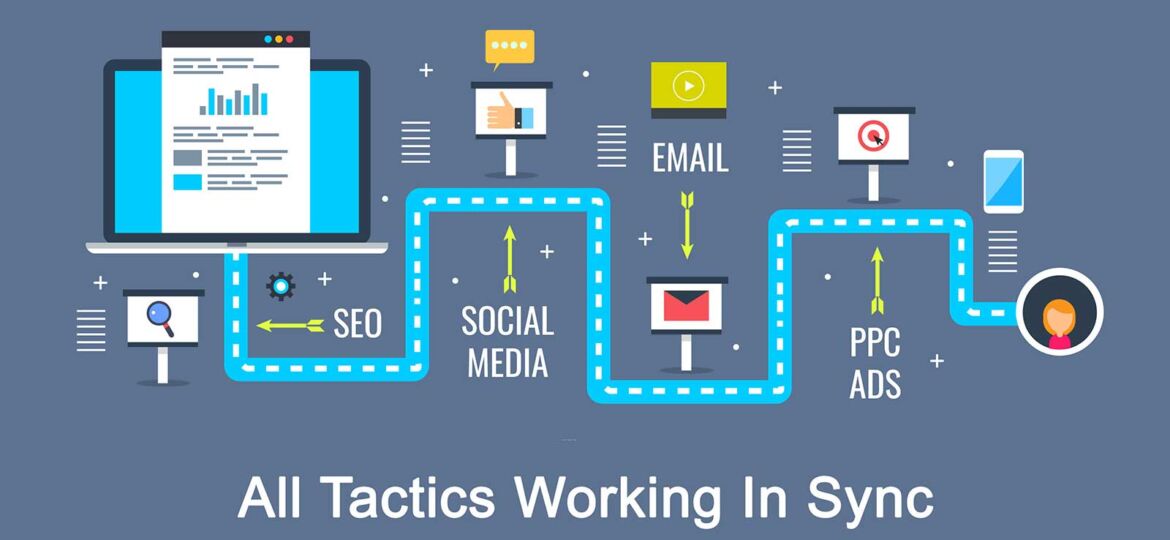The Importance of a Marketing Engine

The most effective marketing efforts will provide consistent, high-quality information personalized to your business’s ideal customer. Maintaining this level of quality and consistency requires a marketing engine.
This marketing engine enables your business to impact your customers more efficiently, improving your brand reputation and, by extension, profitability.
How does this marketing engine impact your business? What factors do you need to create this marketing engine?
Let’s dive in.
How does a marketing engine benefit your business?
A marketing engine, when used properly, will consistently drive more traffic to your website, improve your overall cost savings, and align your marketing with customer preferences.
Your business needs to maintain various marketing efforts to target leads efficiently. This may include social media, email, SEO, paid ads and more. A marketing engine allows your business to take an omnichannel approach. This holistic approach creates brand awareness, nurtures prospects and increases sales all while saving you time, energy and money. How so?
Data shows that consistent and personalized marketing efforts are more successful and have a higher marketing budget ROI. In fact, 80% of customers are more likely to complete a purchase when the marketing messages they see are personalized, with “90% indicating that they find personalization appealing.”
A marketing engine allows you to create relevant, high-quality content while consistently personalizing your message and nurturing leads. So, how do you create this marketing engine?
1. Develop the digital marketing strategy
Before jumping into paid ads, hiring writers or creating social media content, you need a plan. This is called your digital marketing strategy or marketing plan. Starting with a clearly defined message allows your business to use integrated marketing.
Build your foundation by answering the following questions:
- What are your business goals? Get specific here. What results do you need to see from your marketing efforts?
- What product or service are you marketing? This is not just a generic description of your product or service. It is also more than just a list of features. This description should highlight what makes you different. Why should a customer choose you over your competitor(s)?
- Who is your main audience? Who is your ideal customer? List their demographics, needs, drivers and values. Define the buyer’s persona and identify their behaviors and preferences.
- Where does your audience hang out? What locations or “channels” do your customers use? Are they in Facebook group chats? Do they browse YouTube for product reviews? Do they deep dive into blogs and case studies? The places your audience spends their time will be your chosen marketing channels.
2. Create your marketing messages
Now that you have a baseline on your business goals, marketing subject and audience, you can now create your marketing content to be shared. To do this:
- Identify your content source(s), such as your founder, CEO, public speakers, industry leaders, past customers, etc.
- Identify the content goals and the questions/topics your audience cares about.
- Research and curate resources, answers and valuable information.
- Build your marketing and content creation team if you do not already have one. Or, consider partnering with a strategic marketing agency to assist your current marketing team. These professional designers, writers, content managers and other creatives will assist your business in crafting impactful content that attracts prospects.
- The content you create can be adapted and repurposed as needed to increase your reach and engagement.
3. Prepare to handle the influx of prospects
Before you launch, you need to give your lead reception some thought. Scrambling to receive leads during/after a campaign will lead to frustration for both you and your prospects.
- Identify the sales funnel and conversion process. Imagine the sales funnel; how will an individual go from a viewer/visitor to a paying customer? What would that process look like? What content, web pages and messages will the prospect see through that conversion? What would the prospect want to see?
- Lead maintenance and retention. Once a lead is converted, how do you plan to retain and nurture the lead? What team/department handles converted leads? Are they sent automated emails or contacted directly?
Once you have answered these questions, the lead management and nurturing process must be communicated to your sales team.
4. Launch, track, and refine your marketing efforts
Launching your campaign allows your business to observe individuals’ responses. Track and analyze your engagement, open rate, visitors and other metrics to determine the efficiency of your campaign and see if you have reached your goals.
Consolidate the data and responses and look for opportunities to improve and expand. Continue to refine your marketing plan and integrated marketing efforts. Then, rinse and repeat. Once this process runs smoothly, you can be confident you have created a well-oiled marketing engine.
Dream Local Digital is a strategic partner that builds and maintains integrated marketing engines for our clients to brand awareness and drive sales. Our marketing efforts include social media, email, SEO and more. Contact us to tailor a marketing strategy that suits your business needs and boosts your marking ROI.
Newsletter Signup
Stay up to date on the latest digital marketing news, updates, and more. Sign up to receive our newsletter!

